Old money style isn’t necessarily about having money, it’s about understanding a particular approach to dressing that prioritizes quality, restraint, and timelessness over trends and logos.
This aesthetic has become incredibly popular recently, but it’s often misunderstood as simply wearing beige and pearls. The reality is much more nuanced and interesting.
At its core, old money style represents the dressing philosophy of established wealthy families who don’t need to prove their status through their clothing.
Instead of flashy displays of wealth, this approach values subtlety, craftsmanship, and pieces that will look just as appropriate in twenty years as they do today.
The Philosophy Behind the Style
Old money dressing is rooted in the idea of stealth wealth; looking expensive without being obvious about it.
It’s the opposite of nouveau riche fashion, which tends to be logo-heavy, trend-driven, and designed to announce status loudly.
The old money approach values discretion above all else. A truly wealthy person doesn’t need to wear a handbag covered in designer logos because their confidence and quality of life speak for themselves.
This translates into clothing choices that are understated, well-made, and effortlessly elegant.
The style also emphasizes practicality and appropriateness. Old money families traditionally lived active lifestyles; horseback riding, sailing, tennis, country weekends, and their clothing needed to function for these activities while still looking polished.
This practical element is why old money style tends to favor natural fabrics, classic cuts, and versatile pieces.
Key Characteristics of Old Money Style
Quality over Quantity: The foundation of old money dressing is investing in fewer, better pieces rather than following every trend. A cashmere sweater that lasts for decades is preferred over multiple cheap versions that need replacing every season.
Timeless Silhouettes: The cuts and shapes favored by old money style are classic for a reason – they flatter the body without being overly trendy or sexualized. Think A-line skirts, tailored blazers, straight-leg trousers, and wrap dresses.
Natural Fabrics: Wool, cashmere, silk, cotton, and linen dominate the old money wardrobe. These materials age beautifully, feel luxurious, and often improve with wear rather than deteriorating.
Neutral Color Palette: Navy, cream, camel, gray, white, and soft pastels form the backbone of old money dressing. These colors work together seamlessly, photograph beautifully, and never go out of style.
Minimal Branding: Logo-heavy pieces are generally avoided in favor of items where the quality speaks for itself. When brands are visible, they’re typically subtle – think a small Ralph Lauren polo player or discreet hardware on a handbag.
Heritage and Tradition: Old money style often incorporates elements with historical significance – pearls, tweed, tartan patterns, or pieces inspired by equestrian or nautical traditions.
The Modern Interpretation
Today’s old money style has evolved beyond its aristocratic origins to become an accessible aesthetic that anyone can adopt.
Social media has popularized this look, making it less about actual wealth and more about a sophisticated approach to dressing.
Modern old money style maintains the core principles; quality, timelessness, and restraint, while being more inclusive and practical for contemporary lifestyles.
You don’t need a trust fund to dress with old money sensibility; you just need to prioritize classic pieces and understand the philosophy behind the aesthetic.
Essential Elements of the Look
The Blazer: A well-tailored blazer in navy or tweed is fundamental.
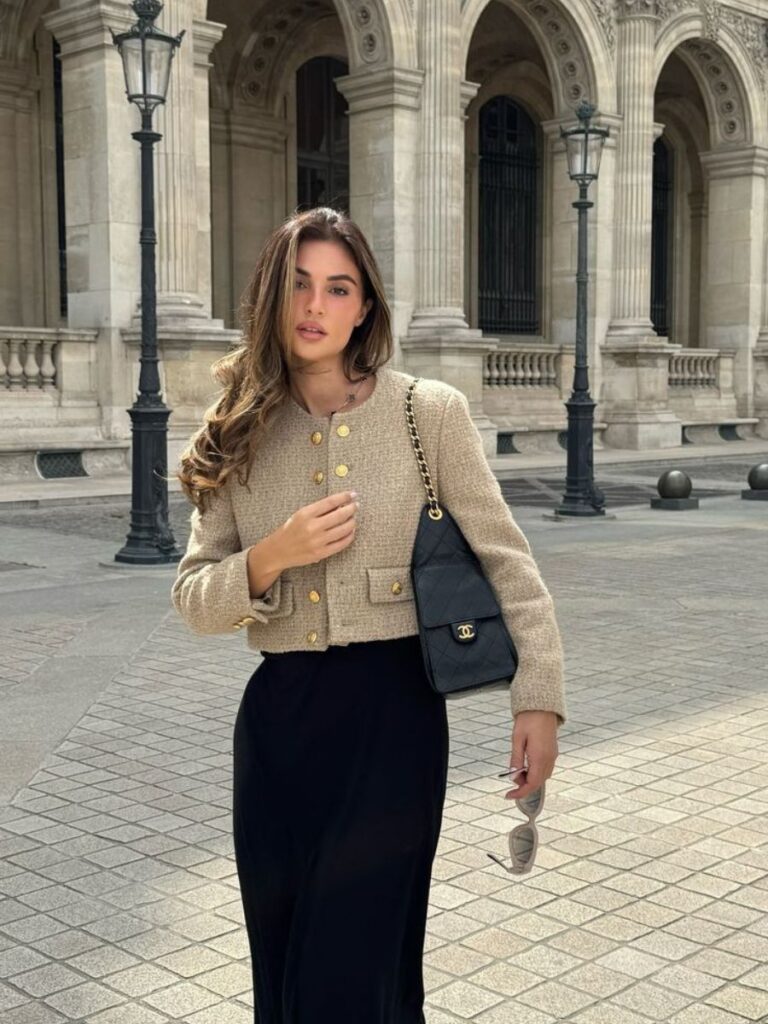
It should fit perfectly through the shoulders and can instantly elevate any outfit from casual to polished.
The White Button-Down: Crisp, classic, and endlessly versatile.
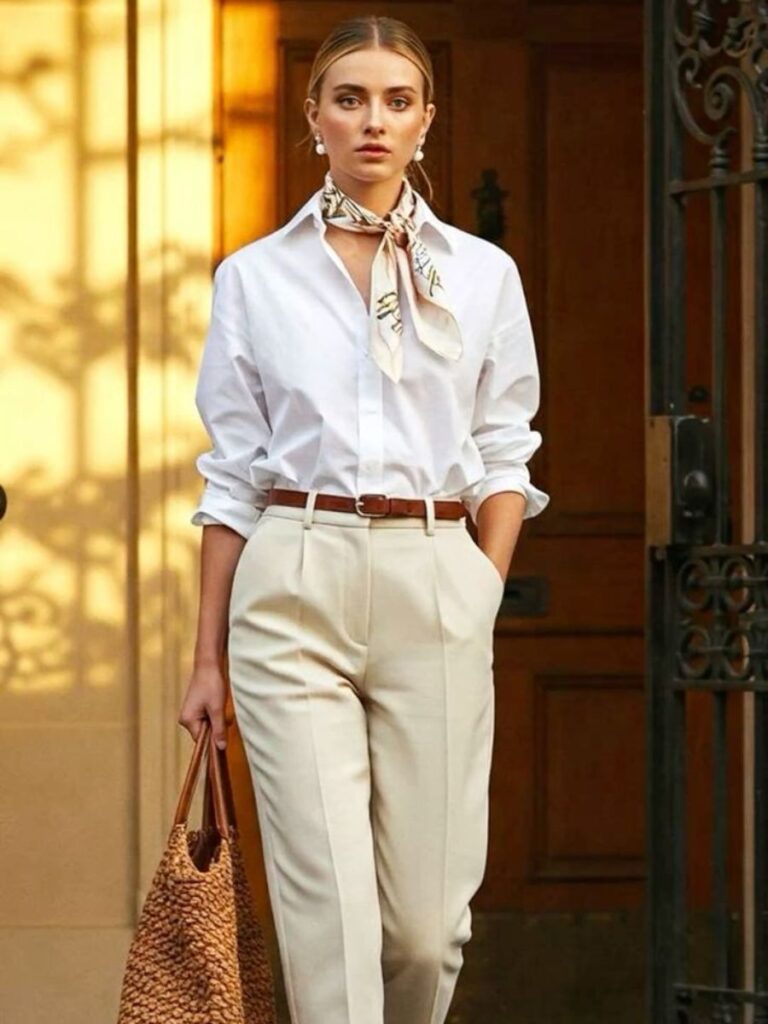
The old money white shirt is usually cotton, has a clean collar, and fits well without being tight.
Cashmere and Knitwear: Soft cashmere sweaters in neutral tones, cable-knit pieces, and classic cardigans provide warmth and luxury without flashiness.

Tailored Trousers: Well-fitted trousers in wool or cotton, usually in straight or slightly tapered cuts.
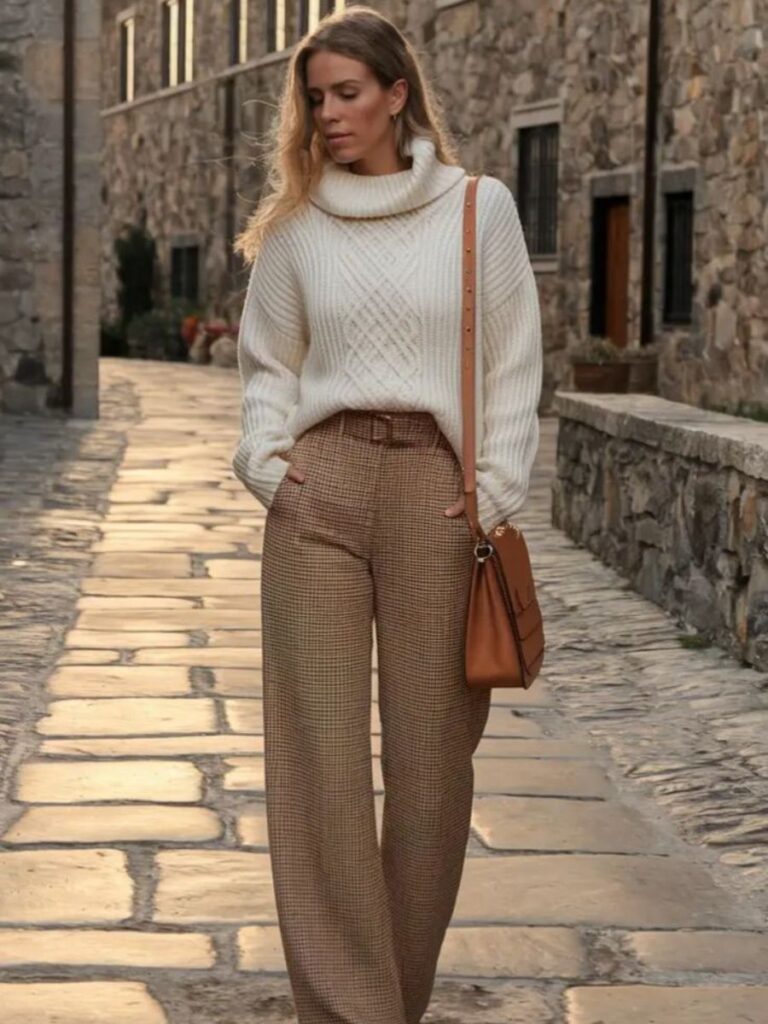
The fit is key, they should be comfortable but polished.
Classic Dresses: Simple sheaths, wrap dresses, and A-line styles in solid colors or understated patterns.
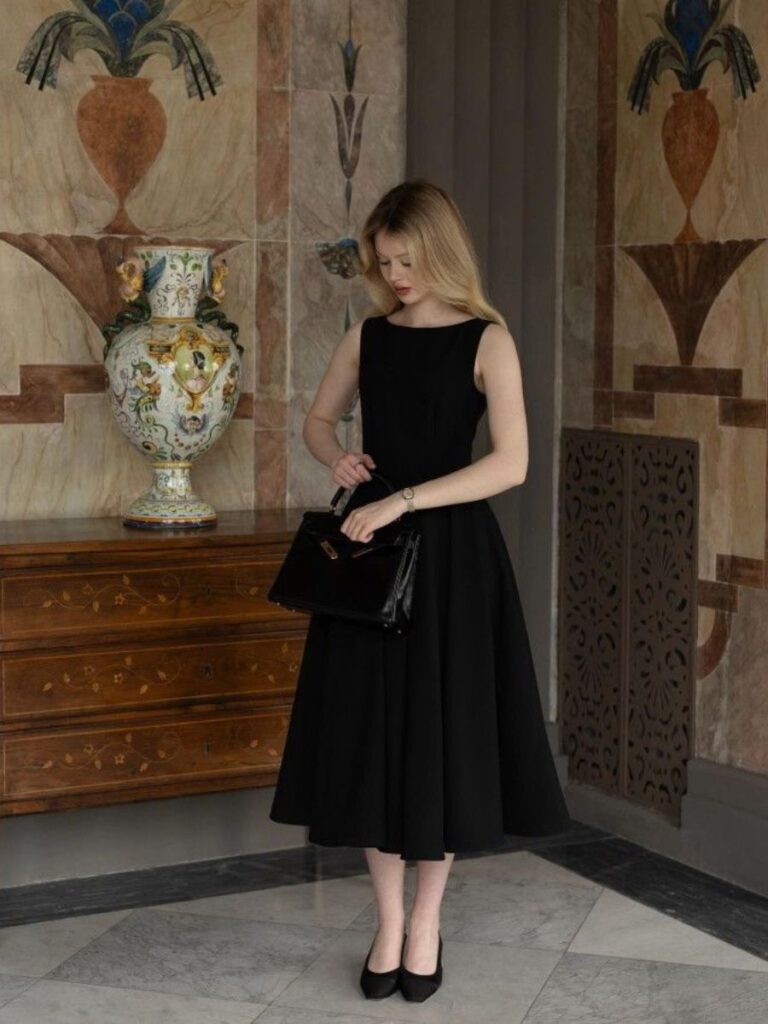
The focus is on cut and fabric quality rather than embellishment.
Quality Outerwear: Trench coats, wool coats, and classic jackets that serve as investment pieces.
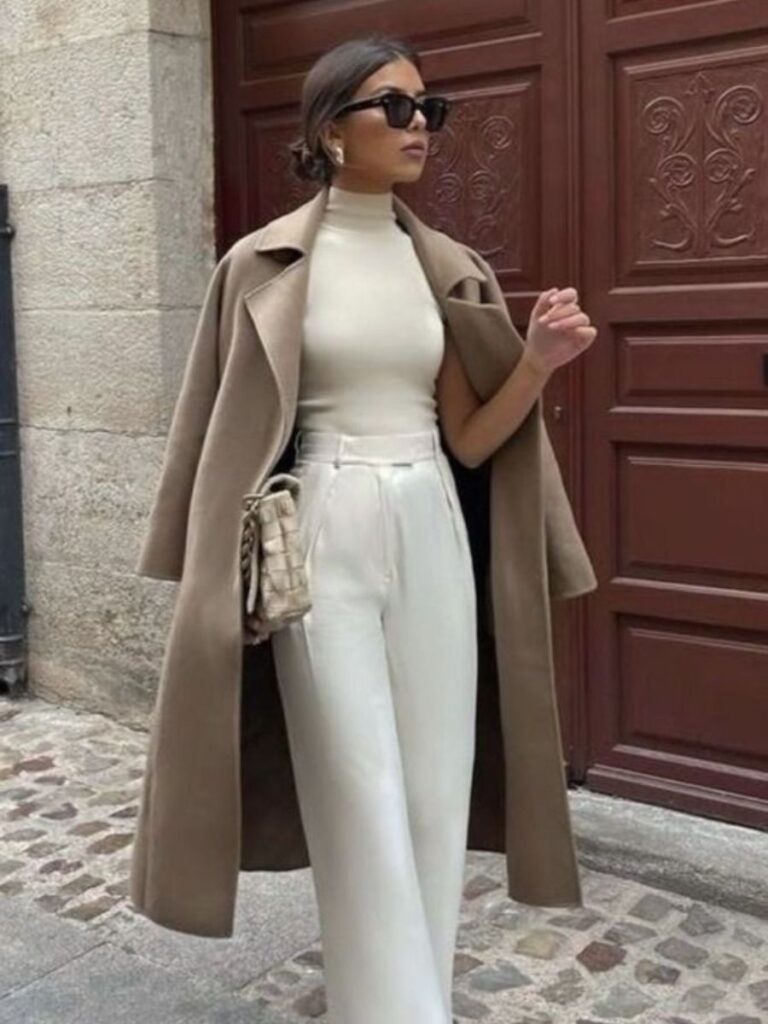
These items often last for decades and become more beautiful with age.
Colors and Patterns
The old money color palette is deliberately restrained. Cream and white provide clean, fresh contrast, while camel and beige add warmth without being loud.
Pastels have their place in old money style, particularly soft pinks, pale blues, and mint greens. These colors evoke preppy, country club aesthetics without being juvenile.
When it comes to patterns, old money style favors classics: stripes (particularly Breton stripes), plaids and tartans, subtle florals, and traditional prints like paisley or toile.
The key is that patterns should be timeless and not overly bold.
Accessories and Details
Old money accessories are typically classic and understated. Pearl jewelry is iconic, whether it’s simple stud earrings, a strand of pearls, or a delicate pearl bracelet.
Gold jewelry tends to be delicate and traditional rather than trendy or chunky.
Handbags are structured, well-made, and often in neutral colors. Think classic quilted bags, structured totes, or simple leather handbags without excessive hardware or obvious branding.
Shoes follow the same principles; classic loafers, ballet flats, riding boots, or simple pumps in leather. The emphasis is on craftsmanship and timeless style rather than following seasonal trends.
Hair and Beauty
Old money beauty tends to be polished but natural-looking. The goal is to look healthy, well-groomed, and effortless rather than heavily made up or styled.
Hair is often worn in classic styles, sleek blowouts, low ponytails, or simple waves. The emphasis is on healthy, well-maintained hair rather than trendy cuts or colors.
Makeup tends to be subtle and focuses on enhancing natural features. A classic red lip, groomed brows, and glowing skin are more important than dramatic eye makeup or contouring.
What makes old money style so appealing goes beyond just the clothing. It represents confidence, security, and a certain effortlessness that many people find attractive.
When someone dresses with old money sensibility, they appear to have their life together, they’re not chasing trends or trying to impress anyone.
This style suggests education, travel, cultural awareness, and a certain worldliness. It implies that the wearer values experiences over material possessions, even though the clothing itself represents quality material goods.
There’s also something comforting about the predictability and appropriateness of old money style. In a world of constant change and social media pressure, this aesthetic offers stability and timeless elegance.
Common Misconceptions
It’s Only for the Wealthy: While quality pieces require investment, old money style is more about mindset and choices than price tags. Thrift stores, outlet shops, and careful shopping can help build this aesthetic on any budget.
It’s Boring: Old money style prioritizes sophistication over excitement, but that doesn’t mean it’s dull. The beauty lies in the subtle details, quality fabrics, and impeccable fit.
It’s Pretentious: While some might see it as elitist, old money style can simply represent an appreciation for quality, craftsmanship, and timeless design.
It’s One-Size-Fits-All: Old money style adapts to different body types, lifestyles, and personal preferences while maintaining its core principles.
Building Your Own Old Money Wardrobe
Start with foundation pieces in neutral colors and classic cuts. Invest in the best quality you can afford for items you’ll wear frequently; a good blazer, well-fitted trousers, and quality knitwear.
Focus on fit above all else. Even expensive clothing looks cheap if it doesn’t fit properly, while well-fitted pieces from affordable brands can look much more expensive than they are.
Choose pieces that work together. The old money wardrobe is cohesive – items should mix and match easily, creating multiple outfit options from fewer pieces.
Consider your lifestyle. Old money style should enhance your life, not complicate it. Choose pieces that work for your daily activities while maintaining the aesthetic’s core principles.
Conclusion
Old money style endures because it solves the fundamental problem of getting dressed: how to look appropriate, confident, and attractive without spending excessive time, money, or mental energy on fashion choices.
By focusing on quality, fit, and timeless pieces, this approach creates a wardrobe that works for years rather than seasons. It’s sustainable, practical, and elegantly simple, qualities that feel increasingly valuable in our fast-paced, trend-driven world.
